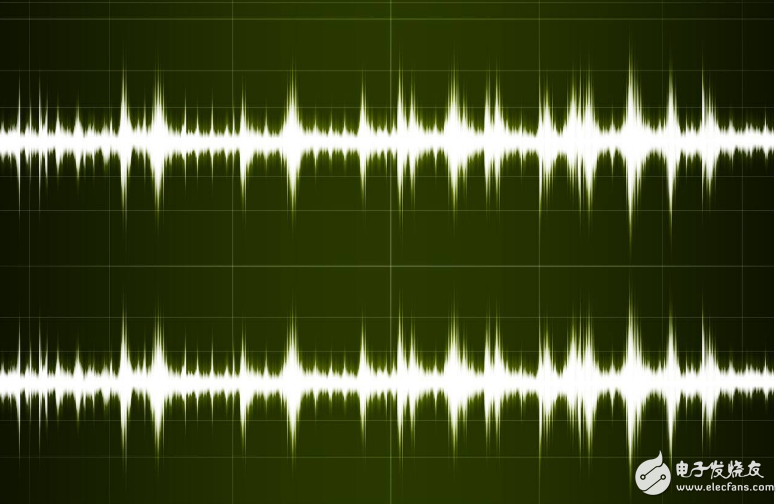The sounds found in nature are incredibly complex, and their waveforms can be very intricate. To digitally represent these analog signals, Pulse Code Modulation (PCM) is commonly used. PCM works by converting continuous analog signals into digital codes through three key steps: sampling, quantization, and coding. Today, audio encoding is widely applied across various fields. But what are the different formats of audio encoding?

**PCM Encoding – The Foundation of Digital Audio**
PCM stands for Pulse Code Modulation. As we discussed earlier, it’s a method of converting analog sound waves into digital data. While the exact mathematical methods behind PCM may vary, its main advantage is high sound quality. However, this comes at the cost of larger file sizes. For example, standard audio CDs use PCM, and a single CD can hold around 72 minutes of music. Despite its size, PCM remains a fundamental format in audio processing.
**WAV Format – A Versatile and Legacy Format**
WAV, or Waveform Audio File Format, was developed by Microsoft and follows the RIFF (Resource Interchange File Format) specification. WAV files contain a header that describes the audio stream, but they don’t enforce strict encoding rules. In addition to PCM, WAV can support other audio encodings like MP3, provided the right decoder is available. On Windows, WAV based on PCM is the most universally supported format, making it ideal for audio editing and production. It’s often used as an intermediary when converting between different audio formats, such as from MP3 to WMA.
**MP3 Encoding – The Most Popular Compression Standard**
MP3, short for MPEG-1 Audio Layer 3, is one of the most widely used audio compression formats. It offers a high compression ratio while maintaining acceptable sound quality. Originally developed in the 1990s, early versions of MP3 suffered from poor sound quality due to limited understanding of human hearing. Over time, improvements in encoding algorithms have significantly enhanced its performance. Today, MP3 is supported by nearly all devices and platforms, making it a global standard for audio distribution.

**OGG Vorbis – The Open-Source Alternative**
OGG Vorbis is an open-source audio compression format known for its efficiency and flexibility. Developed as part of the OGG multimedia project, it aims to provide a free and open alternative to proprietary formats like MP3. OGG Vorbis supports multi-channel audio, which allows for more immersive listening experiences, especially with surround sound. Compared to MP3, it offers better sound quality at similar bit rates and is continuously evolving with new technologies.
**MPC Encoding – High Quality, Small Size**
MPC, originally called MP+, is another audio encoding format that focuses on achieving high-quality sound with smaller file sizes. Though not as popular as MP3 or OGG, MPC has gained a loyal following among audiophiles who value both quality and efficiency. Its encoding process is designed to preserve as much detail as possible while reducing the overall file size.
**mp3PRO Encoding – Enhanced MP3 with SBR Technology**
mp3PRO is an enhancement of the traditional MP3 format, introduced in 2001. It uses Spectral Band Replication (SBR), a technology that improves high-frequency sound quality at lower bitrates. This makes it possible to achieve higher fidelity with less data. mp3PRO combines the MP3 signal with the SBR signal, creating a more efficient and high-quality audio stream. It’s particularly useful for streaming and mobile applications where bandwidth is limited.

**WMA Format – Microsoft's Streaming Solution**
Windows Media Audio (WMA) is a format developed by Microsoft, specifically designed for online streaming. It offers features like copy protection, streaming capabilities, and efficient compression. WMA is known for delivering CD-like quality at low bitrates, making it ideal for web-based audio. Microsoft has also integrated WMA into its operating systems, ensuring widespread compatibility.
**RA Format – RealAudio for Online Streaming**
RealAudio (RA) is a format optimized for online streaming, developed by RealNetworks. It dynamically adjusts the bit rate based on the listener’s internet connection, ensuring smooth playback even under low bandwidth conditions. RA supports multiple audio codecs and includes features like content protection, making it a favorite among music streaming services.
**APE Format – Lossless Compression for Audiophiles**
Monkey’s Audio (APE) is a lossless compression format that preserves every detail of the original audio without any quality loss. Unlike MP3 or AAC, which sacrifice some data for smaller file sizes, APE maintains full fidelity. It’s highly favored by audio enthusiasts and is often used for archiving high-quality music. While its compression ratio isn’t as high as other formats, its ability to deliver perfect sound makes it a top choice for those who prioritize audio quality.
Solar Inverter,Efficiency Home Inverter,Solar System Inverter,Solar Pump Inverter
GuangZhou HanFong New Energy Technology Co. , Ltd. , https://www.gzinverter.com